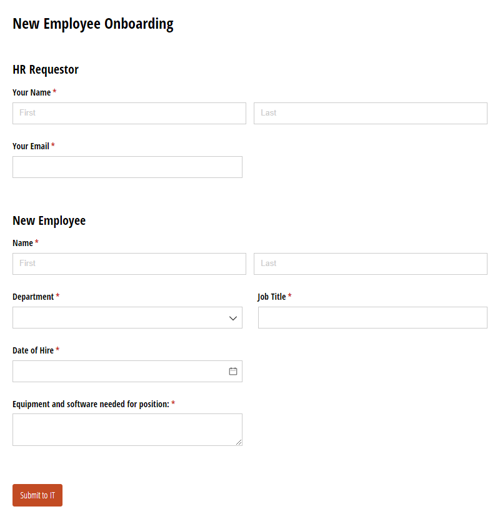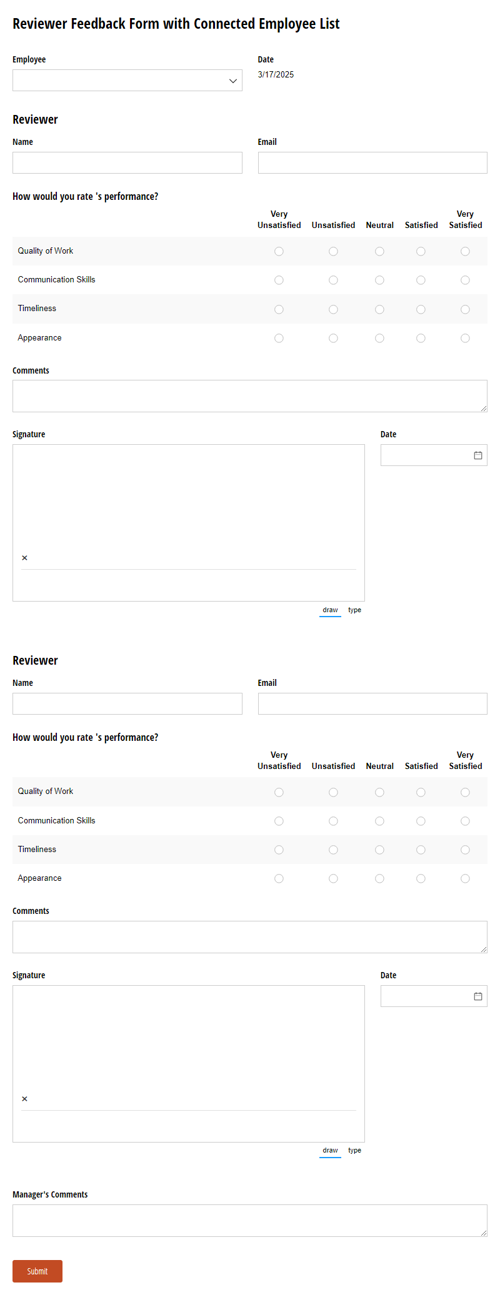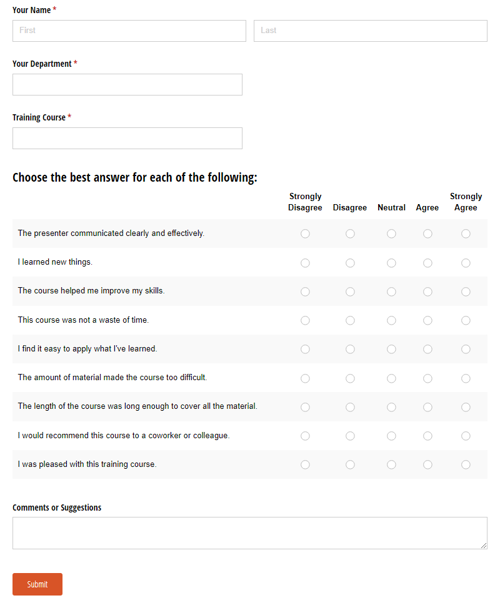You have 44 days to impress a new hire and discover how with proven strategies for effective employee onboarding using digital forms. Streamline the process and ensure new hires are successful from day one.
Employee onboarding is a critical phase in the talent management lifecycle, influencing not only the success of new hires but also their perception of the organizational culture and their role within it. Human resources are the architects of a memorable and effective start for every new hire.
In today’s digital age, where efficiency and effectiveness are paramount, leveraging technology like digital forms can significantly enhance the onboarding experience.
What is Employee Onboarding?
Employee onboarding is the process of integrating a new employee into an organization. It goes beyond mere new hire orientation; it’s a comprehensive approach that involves administrative tasks, social integration, and professional development components to support successful assimilation into company culture and roles.
It starts with an official job offer and new hire documentation and continues until an employee starts genuinely producing in a role. However, the time required for onboarding can vary between organizations. Some see it as a one-day event, while others extend it over 18 months.
Why is Effective Onboarding Crucial for New Hires?
An average employee will decide if their new job is a good fit in the first 44 days. Quality onboarding is essential for the long-term success of new employees. Employees might regret accepting the job offer if the onboarding experience doesn’t meet their expectations. A poor process can leave a negative impression, affect their perceptions, and lead to early resignations. High turnover can be costly for employers.
A successful onboarding process helps new hires settle into their roles, understand the organization, clarify job objectives, and build good relationships. A memorable onboarding experience makes employees feel welcome and helps them integrate quickly with the team.
In a study by Enboarder, 35% of HR leaders say focusing on the onboarding process to help new hires feel engaged and be productive as soon as possible leads to fostering overall effective employee engagement.
Key Components of a Successful Onboarding Process
HR managers already have a lot on their plates, and the paperwork involved in onboarding can be overwhelming. Streamlining processes positively influences new employees and reduces the HR team’s workload.
Before starting a formal onboarding program, employers should ask themselves questions to discover the best way to help new employees quickly adapt to company policies and culture:
- When will onboarding begin?
- How long will it last?
- What first-day impression should new hires have?
- What should new employees know about the culture and work environment?
- What roles will HR, direct managers, and co-workers play?
- What goals will be set for new employees?
- How will feedback be gathered and success measured?
After answering these questions, you can enhance the steps in your onboarding process. Organize each process into three categories – preboarding, first-day orientation, and role-specific training. This will build a solid foundation for your new employee to launch a successful career at your organization.
Preboarding
Employees accepting an offer doesn’t guarantee they’ll show up on their start date. They might still consider other job offers during the waiting period.
Precise, targeted communication builds anticipation and lets them know they are valued. Provide them with answers to common questions, such as where to go on their first day, whom to ask for, and what to wear.
Most preboarding activities are invisible to the new hire but are evident when the new hire arrives for a seamless first-day experience.
Online forms can automate coordination with other teams to prepare for their arrival. Fill out a new hire form with all the details IT, their manager, and office manager will need. IT teams need the new hire’s hardware and software requirements to prepare their desk, phone, computer, and password logins. Their manager should have a checklist for adding them to their team meetings and team-specific tools. The office manager will need to know specific details to give them access to the parking lot, office space, and any other spaces they set up for employees.
At Cognito Forms, we collect our employee’s favorite things on an employee form. We use those responses to provide the employee’s favorite drink or snack in the kitchen.
Orientation and first day

On your new hires’ first day, set clear expectations and introduce objectives for the role. They will not remember every detail shared but will get a sense of the company culture and core values. Create a comfortable and welcoming environment. Along with all the necessary formalities, sprinkle excitement into their day.
New hire orientation checklist:
- Show them to their computer and workstation
- Fill out all necessary paperwork online
- Deliver necessary office supplies (furniture, keys, access card, etc.)
- Assign a go-to person to help the employee settle in
- Gift first-day SWAG to welcome and integrate new hires into the company culture from day one
Role-specific training
Building a solid foundation ensures new employees are engaged, comfortable, and happy in their new work environment. Assess their skills to gauge their knowledge and abilities. Find their learning style - visual, auditory, reading, or tactile. Then, create a tailored, role-specific training plan. Their success is the organization’s success.
Establish clear goals for the new hires’ first 30-60-90 days and outline their priorities. A clear roadmap is easy to follow as your employee gets the lay of the land. Throughout, consistently convey your organization’s unique culture, mission, values, and brand.
Regularly check in on your new hires throughout their first 90 days to gather feedback and provide support. Have they hit any roadblocks in accomplishing their 30-60-90 day plan? Do they need additional training?
Common Pitfalls in the Onboarding Process and How to Avoid Them
We can see how important it is for new hires to integrate seamlessly into their new roles and the company culture. However, there are common pitfalls that can disrupt the onboarding process.
Information overload
Challenge: New employees can feel overwhelmed if bombarded with too much information at once, often described as “drinking from a fire hose.” This can lead to confusion, decreased detail retention, and a stressful start that impacts their initial perception and effectiveness at work.
Solution: Structure information delivery across multiple days or weeks to prevent information overload. Utilize digital tools to create interactive forms and checklists that new hires can complete at their own pace. These can include:
- Day 1 essentials: Basic company policies, safety procedures, and a brief organizational chart.
- First-week focus: Schedule a mix of manager and employee-led tasks for their first week. Avoid back-to-back meetings or requiring too much online training.
- Employee-led 30-60-90 learning: Stagger meetings and training with an online form checklist that employees can complete independently. Upon completion, the form can be sent to the manager or HR officially tracking their onboarding.
Neglecting cultural integration
Challenge: New hires might feel isolated or disconnected if they’re not adequately introduced to the company’s culture, values, and the unwritten social rules of the workplace.
Solution: Facilitate cultural integration from the start by:
- Welcome meetings: Set up one-on-one or group meetings with team leaders or the CEO to discuss the company’s core values and culture. When in-person meetings aren’t feasible with leaders, share a welcome video.
- Mentorship and support systems: Assigning mentors or buddies can help new employees navigate their first few months.
Beyond the office walls: Create opportunities for new hires to feel connected with the team – more than just a number.
At Cognito Forms, we take new hires and their teams to lunch on their first day. It’s a way to step away from the formality of the office and encourages more casual conversations to get to know each other.
Inconsistent communication
Challenge: Lack of consistent and clear communication can leave new hires uncertain about whom to approach for help and how to perform specific tasks, impacting their early experiences and productivity.
Solution: To enhance communication clarity and consistency, adopt a unified approach that involves both automated tools and centralized resources:
- Automated updates: Set up automated emails or form responses that inform new hires about what to expect each day of their first week.
- Feedback forms: Implement regular digital online feedback forms where new hires can ask questions or express concerns anonymously. This feedback can help HR and managers adjust the onboarding process in real time.
- Central information repository: Use a central digital dashboard to store all communications, documents, and resources. New hires can access this anytime, reducing the feeling of being overwhelmed or out of the loop.
By addressing these pitfalls with thoughtful strategies and the support of digital solutions like Cognito Forms, organizations can create a more engaging and practical onboarding experience that supports the long-term success of their new hires.
How to Measure the Success of Your Onboarding Program
To ensure your onboarding program effectively supports new hires, track its success using specific, measurable metrics. Here are detailed methods to gauge the impact of your onboarding initiatives:
Employee turnover rate
Monitoring turnover rates for new hires can indicate the effectiveness of the onboarding process.
Metric: New Hire Turnover Rate | 90 days + 1 year
- How to measure: Calculate the percentage of new hires who leave the company within these time frames compared to the total number of hires in the same period. A lower turnover rate often indicates a more effective onboarding process.
- Formula: (Number of separations during the time period / Number of new hires at the start of the period) x 100
- Benchmarking: Compare these figures with industry standards or historical company data to assess improvements or declines in retention.
Employee satisfaction surveys
Regular feedback from new hires about their onboarding experience provides invaluable insights.
Metric: Satisfaction survey scores | 90 days
- How to measure: Distribute surveys at the 90-day mark. Include questions that assess clarity of information provided, effectiveness of training sessions, and overall satisfaction with the integration process.
- Analysis: Use a Likert scale (e.g., 1 to 5) to quantify satisfaction levels and analyze trends over time or across different departments. High satisfaction scores, especially improvements over time, suggest successful onboarding.
- Actionable insights: Detailed survey comments can help identify specific areas of strength and opportunities for improvement.
Too many surveys can create an undue workload on employees. Make sure your survey can be completed within 5 minutes. This employee satisfaction survey is a great place to start.
Additional metrics to consider
- Time to productivity: The time it takes for a new hire to become fully productive is a strong indicator of a successful onboarding process.
- Cultural integration scores: Based on feedback regarding how well new hires feel like they fit into the company culture.
- Role competency assessments: Supervisors regularly evaluate how effectively new hires master their job responsibilities.
- Engagement metrics: Track participation in onboarding activities and use engagement scores to assess the involvement of new hires in learning and social events.
By systematically tracking these metrics, organizations can fine-tune their onboarding processes, ensuring their efforts are worth it. This approach enhances the new hire experience and supports broader organizational success.
How Can Digital Forms Enhance the Onboarding Experience?
Delivering an engaging and consistent experience for new hires should be a top priority. Workflow automation works the same on busy, slow, and sick days.
Online forms streamline processes, reduce errors, and create a single source of truth. This data is easily accessible for those who need it, regardless of location, with impenetrable security.
Online forms with Workflow automation make for the perfect combination. Employees and human resources departments alike will benefit from these features with Cognito Forms:
- Streamline data entry: Employees enter their personal information just once using a Person form and fields. This data is then seamlessly integrated into subsequent forms through a Lookup feature, ensuring efficiency and consistency across documentation.
- Ensure data security: Organizations collect sensitive information, such as social security numbers and addresses. Our encryption safeguards ensure that this data is accessible only to authorized personnel, such as Human Resources, maintaining confidentiality and compliance.
- Organize assigned tasks: Workflow Tasks provide employees with a clear, organized list of forms to complete upon logging into Cognito Forms. This feature displays a list of forms as tasks, guiding employees through necessary actions with clarity.
- Facilitate easy updates: Employees can conveniently update their personal information via a dedicated form update link, enabling them to keep their details current with minimal hassle.
- Enhance form accessibility: Our online forms are designed for ease of use, allowing employees to fill them out at their convenience, whether on a computer or a mobile device.
- Employee authentication: By confirming the identity of each employee completing the form, you ensure the accuracy and ownership of the responses.
Onboarding templates
Use online forms to create an engaging and efficient onboarding process.
Integrating Cognito Forms in Your Onboarding Strategy
Cognito Forms facilitates efficient and engaging new hire onboarding through robust automation. By enabling Workflow on the forms, organizations can expect streamlined administrative processes, enhanced communication, and a more cohesive onboarding journey.
Our digital forms offer powerful capabilities, such as conditional logic, entry management, and data integration, making them dynamic - adapting to the unique needs of each new hire.




